After this year's Tour de France, the image of Chris Froome sitting on the top tube of his Team Sky Pinarello is probably what pops into our heads when people talk about descending quickly on a road bike. Froome displayed fantastic skills and daring on his descent into Luchon, reducing his aerodynamic drag by making himself as small as possible, crouched on the top tube, tucked up close to the front fork, hands on the drops and legs pedaling furiously as he plunged from one apex corner to the next.
Sadly, we can't all ride like Froome, but there are ways we can improve our descending skills to ensure we're faster and safer on the bike - and have more fun while we're out there.
The BikeRoar team have put together our top ten tips for getting to the bottom faster and in one piece
1. Make Sure Your Bike is Safe
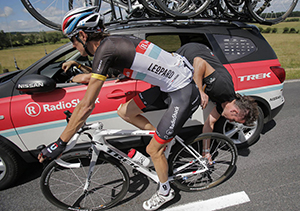
It probably goes without saying, but before hammering down a mountainside it's important to be sure your bike is in tip-top shape. Among other things, make sure:
- Wheels are round and true (no wobbles) and are installed properly and securely tightened in place.
- Tires are fully inflated (check the pressure before every ride).
- Handlebars and stem, seat and post are tight and secure.
- Brakes work perfectly (no rubbing, easy to operate and and provide excellent stopping power).
- Steering bearings (called the "headset") are properly adjusted. There should be no play and it should turn freely.
2. Ride in the Drops
With your hands on the lower part of the handlebar your center of gravity is closer to the ground, like a racecar. Also, your weight will be more evenly distributed between the front and rear wheels, which helps maintain traction, especially during braking and turning.
RELATED: 6 Road Tires Worth Paying More For
3. Start Slow
Rather than going for top speed straight away, focus on trying to get a nice smooth line through each corner. Go into the corner at a controlled speed, making sure you brake before you hit the corner. Choose your line, release the brakes and ride smoothly through the corner. Once you have mastered this you can address your speed.
4. Stay Relaxed
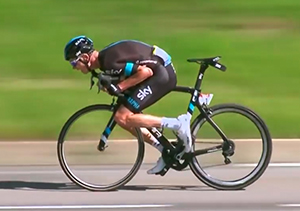
image: cyclingweekly.co.uk
Maintain a relaxed posture and attitude the whole way down the hill - it's amazing how much difference this can make. Start at the top of your body and let go of tension. Keep breathing, open your mouth to unclench your jaw, drop your shoulders, bend your elbows, release your death grip on the bar, uncurl your toes, and let your feet lie flat on the bottoms of your shoes.
If you do feel yourself losing control, do not panic and do not tense up. Get on your brakes and try to smoothly apply them while still being able to steer. If you panic and tense up, you usually apply your brakes too hard and you lose the ability to steer and avoid objects.
5. Try, Try Again
Descending the same hill over and over will do wonders for your confidence as it will give you the chance to practice your skills on familiar territory. Each time you can lay off your brakes and lean your bike over a little more.
(It's widely suspected that Chris Froome secretly practiced descending and pedaling in his crouched aero position for many hours to ensure he'd make the most of it.)
6. Your Outside Leg Takes the Weight

image: @fabulousport
Improper weight distribution can steal momentum and time through the corners - by keeping the outside leg straight and with most of the body-weight concentrated downwards through the outside pedal, not only do you get more control during the cornering moment, but you can cut tighter lines and keep the bike on the shortest course through the corners more easily.
Corner Smart
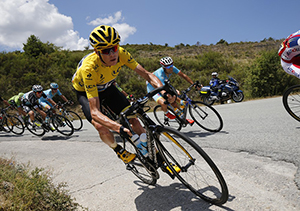
image: pelotonmagazine.com
The biggest mistake people make descending: they wait until they're in the middle of a turn to brake. Instead, scrub speed before the turn. If you have to brake in the turn, you didn't slow enough to begin with. To initiate a turn, lean the bike - not your body - into the turn (right turn, lean bike right). The faster and sharper the turn, the more you'll lean the bike. To exit the turn, gently straighten the bike
If you get off your line, relax and brake gently to ease into your line. Consistency is key here, so taking the time to always be on the right line will pay off come race day.
RELATED: Bike Fit: Does size matter?
8. Maintain a Safe Distance
Things obviously happen much faster at high speed: changes come up quicker on the road (potholes, car doors, slower riders), but your brain still has the same reaction time it had at lower speeds. The most critical thing to adjust as you get quicker, is how much time you allow for decision-making and adjustments to your position on the road. Look further ahead, brake sooner, sit further back from others, pass other objects with a wider berth.
When descending in a group of riders, don't make the common mistake of staring at the back wheel of the rider in front of you. Just check on her occasionally while making your main focus what's coming up 20 or 30 feet down the road. This lets you anticipate what's to come and set up for corners. If you can't see around the rider or group in front, slow and back off until you can see over or around them. Don't assume that they know the descent well enough to push it. If it feels unsafe or risky to you, it probably is, so back off and stay safe.
9. Look Up
Don't be tempted to look at the ground beneath you as you descend. Instead, keep your head up so you can anticipate what's coming next. When cornering, focus your attention on the end of the corner as this will automatically shift your body and enable you to take the corner a lot more smoothly.
10. Watch the Pros
This doesn't mean you should go straddling your top tube like Froome - but there is a lot to be learned by studying the technique and body position of the top pros. Even amongst the pro peloton there are good and bad descenders - if you want to see how it's done, watch Peter Sagan, Vincenzo Nibali, or Colombian Jarlinson Pantano.
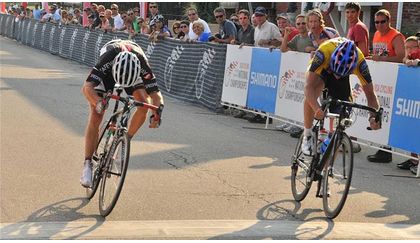
RELATED ARTICLE:
How to become a better sprinter: Tactics and techniques
Looking to get better at sprints?BikeRoar has you covered with some great tips on how you can become a better... READ MORE
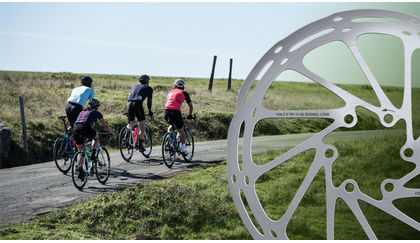
RELATED ARTICLE:
Racer or not, is it safe to buy a road bike with disc brakes?
Theres no denying the performance gains of having disc brakes on your road bikeBut with all the drama in road cycling BikeRoar gives you advice on...READ MORE


